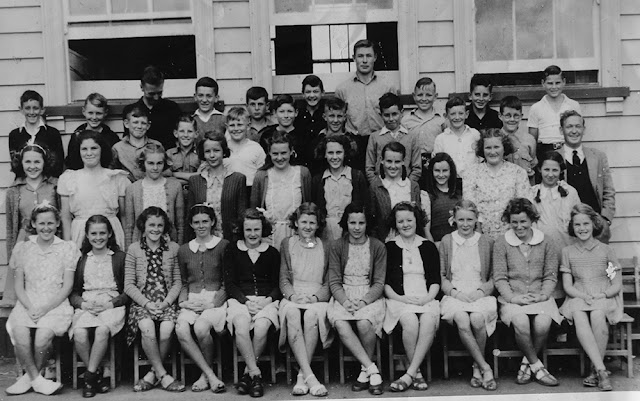A half-size colour copy of the original document is in the Tauranga Library. The map itself is in the public domain, obtainable from Land Information New Zealand if you care to penetrate its arcane and frustrating file systems (I used a professional search agency). SO 424 is the first map of Te Puna, Peterehema (modern Bethlehem) and Otumoetai to be made after the raupatu that followed the battles of Gate Pa and Te Ranga. It is the landscape we know, drawn after a war. Elsewhere, in similarly tiny letters, are place names we also know, and still use: Epeha, Waikaraka, Oikimoke. There are more, and they are all Maori. Perhaps influenced by Crown Commissioner H T Clarke, surveyors did not invent names for an already well-populated geography.
Names of landowning families appear. Roha Borel survived the sack of Rangiaowhia and married Emile, who twice [1] persuaded the Crown to make a grant of land to her. The “Nicholls children” are perhaps the Nicholas family whose marae is Tawhitinui. The one pākeha name, R C Fraser, requires further research into some tantalising leads.
Beside those already noted, ‘MILL’ is the only other pākeha word. How did such modern technology - a water-wheel, alongside a substantial building housing the shafts, chutes and stones that ground wheat into flour – come to be alongside a riverbank in the valley of the Wairoa? Who built it, and when? How long was it used?
 |
| The Wairoa River near Tauranga, circa 1918 Photograph by Frederick George Radcliffe Courtesy of the F G Radcliffe Collection, Alexander Turnbull Library (G-6933-1/2) |
Nevertheless, in the mid-1860s, there was a flour mill at Pukekonui. And mills were very much the thing for entrepreneurs: Te Ara tells us [2] that “between 1846 and 1860, 37 flour mills were built for Maori owners in the Auckland province alone.” Ours stood almost exactly where the boat ramp is now, just upstream from the road bridge, south-west across the river from Potariwhi on the Bethlehem bank. (Colonists mangled the name into “Point Relief”.) Maori and pākeha alike moored their river scows there.
Ngati Kahu owned the mill. The New Zealander newspaper of 31 May 1864 described it, admittedly as a site recently abandoned to the oncoming Colonial Defence Corps, as “an extensive corn mill worked by water… the whole neighbourhood is covered with plantations of potatoes, corn [ie, wheat], pumpkins and melons… [the natives’] retreat must have been a hurried one, to have sacrificed so much food.”
The loss of such abundantly fertile land after 1865 must have been especially grievous. But the mill survived in Maori ownership, possibly because the status of the river and its bed were, until the passage of the Coal Mines Act 1903, debatable; at a less abstract level, post-confiscation native reserves were mainly in the vicinity of the river mouth. [3] Theophilus Heal’s 1865 field book notes the hapu of Matehaere residing at the Mill, Wairoa. [4] It was too valuable an investment to be abandoned for long.
And its value was well-understood. In 1872 Commisioner Clarke was reported in the Waikato Times as hearing an “important native case [that] has lasted two days. It was concerning the ownership of the mill at Wairoa. The litigants are leading chiefs of the district. The decision of the Court may lead to bloodshed.”
Bloodshed was fortunately avoided, and by 1888 [5] our old friend Mr Lundon was involved in some kind of partnership deal between one Mr Blundell and the native owners:
The parochial hopes of the editor of the Bay of Plenty Times were not to be borne out. David Borell blamed the sparrows. [6] Perhaps an imported shipment of Australian seed, or just a prevalence of strong north-westerly winds [7], meant that local wheat crops succumbed to rust. Or maybe it was simple economics: the wide dry plains of Canterbury were much better suited to producing flour for even North Island bakers. Mr Blundell turned his attention to a new project, the flour mill at Waimapu, and the Wairoa mill’s grindstones were taken there in 1893. [8]
And the mill building? During the early 1880s it may have been, briefly, repurposed. Longtime Wairoa Road farmer Doug Harrison provides this reminiscence: “… there was a Flour Mill built near the end of the Wairoa River Bridge. This had a very checkered career, standing idle for most of its life, eventually being used as a school for a few years. When the Bethlehem school opened about 1900 the pupils from the Mill transferred to the Bethlehem school.”
This sits tantalisingly alongside Antoine Coffin’s remark that “some schools were initially set up on temporary sites, for example the Paeroa Native School [the original name for Bethlehem School] started out in an old mill and moved several years later once attendances had been confirmed.” [9] Paeroa Native School officially opened in 1884, but before that had been operating “as a half-time school along with that at Huria.” [10] It is just possible that, before Mr Blundell got the grindstones moving again, the mill had been a makeshift classroom.
References
[1] The first allocation, around today’s Snodgrass Road/Wallace Road area, met with resistance from settler neighbours and was replaced with a grant on the other side of the Waikaraka estuary, where Borells still live.
[2] https://teara.govt.nz/en/agricultural-processing-industries/page-5
[3] https://forms.justice.govt.nz/search/Documents/WT/wt_DOC_93499720/Wai%20215%2C%20A033.pdf , p.28
[4] https://forms.justice.govt.nz/search/Documents/WT/wt_DOC_93406645/Wai%20215%2C%20A076.pdf, Appendix 6
[5] https://paperspast.natlib.govt.nz/newspapers/BOPT18880406.2.6
[6] https://forms.justice.govt.nz/search/Documents/WT/wt_DOC_93406645/Wai%20215%2C%20A076.pdf, p.35
[7] For a mid-twentieth century account of rust infections in wheat, see https://www.tandfonline.com/doi/pdf/10.1080/00288233.1966.10431548
[8] https://forms.justice.govt.nz/search/Documents/WT/wt_DOC_93406645/Wai%20215%2C%20A076.pdf, citing Bellamy, A.C. 1982. Tauranga 1882-1982. Flour Mills, ed A.C. Bellamy. Tauranga County Council. pp204-207
[9] https://forms.justice.govt.nz/search/Documents/WT/wt_DOC_93406645/Wai%20215%2C%20A076.pdf, citing Nightingale, Tony.March 1996.History of the Economic and Social Conditions Affecting Tauranga Maori.Crown Forestry Rental Trust. p81
[10] https://paperspast.natlib.govt.nz/parliamentary/AJHR1885-I.2.2.3.6

















